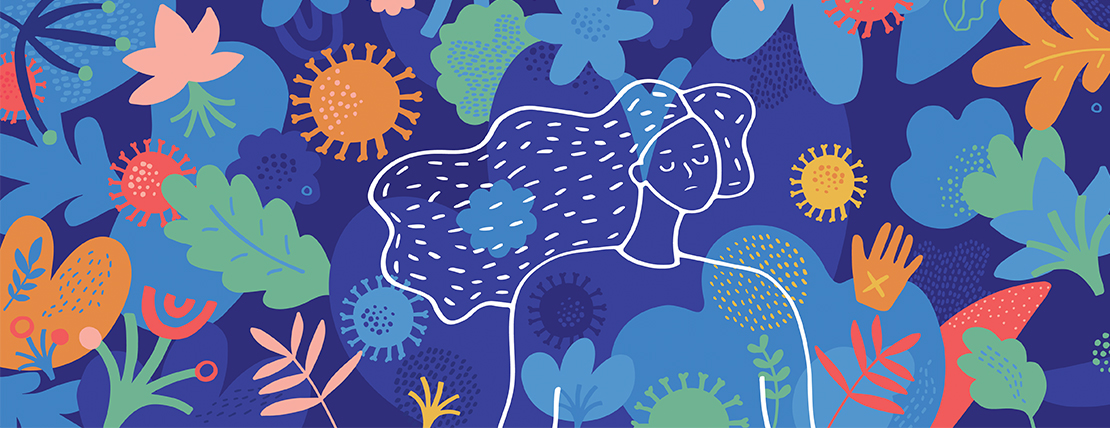The recent Netflix documentary, “Untold: Breaking Point,” tells the story of Mardy Fish, a largely unheralded American tennis player who clawed his way to reach No. 7 in the world until he came face-to-face with an even tougher opponent than the great Roger Federer: a crippling anxiety disorder.
“I didn’t know where to go. No one knew what I was going through,” Fish said in the documentary. “I had trained myself to show no weakness. Telling other people about it was showing weakness and I didn’t know how to handle that, so I just kept it in.”
This past summer, Japan’s Naomi Osaka was the world’s top-ranked female tennis player when she made news for her decision to pull out of the French Open based on her own anxiety disorder issues, which sparked an international debate on elite athletes and mental health.
Throughout the past several years, other elite athletes have come forward to share similar stories and offer advice: Gold medal swimmer Michael Phelps (who, along with several other former Olympians, shared his mental health struggles in the acclaimed documentary “Weight of Gold”), Olympic gymnasts Simone Biles and Aly Raisman (“healing is not linear”), mixed martial artist Ronda Rousey (“mental illness is not a weakness”), NBA players DeMar DeRozan (“no one is indestructible”) and Kevin Love (“everyone is going through something”).
Professional athletes in every sport are admired for their accomplishments, superhuman feats and ability to perform with extraordinary grace under intense pressure. But athletes are real people with real-life challenges, and many face a number of barriers in seeking help. There are more negative attitudes toward help-seeking among athletes than the general population, greater stigma, poorer mental health literacy and fear of the consequences of seeking help (e.g., losing the confidence of unsympathetic coaches and team- mates, dulling their competitive edge, losing endorsements). As the former executive director at USA Artistic Swimming, the national governing body for the Olympic sport of synchronized swimming, and nationally rated USA Gymnastics and NCAA gymnastics judge, I’ve seen up close the real-life mental health challenges elite athletes deal with — and often try pushing aside — as they draw on every ounce of determination necessary to successfully compete at the highest levels. For these reasons, employee assistance program (EAP) support has become more commonplace among professional sports teams and organizations serving elite athletes, which makes perfect sense, as EAPs are all about removing mental health and behavioral barriers to achieving the desired outcomes.
For years, EAPs have made similar inroads with high-powered executives. It wasn’t all that long ago that CEOs were expected to suffer their job stress in silence. If you couldn’t handle the myriad responsibilities that come with running a company, then you were weak and unfit to lead. That gave rise to cartoon caricatures of what a “real CEO” should be like: always on, always the loudest voice in the room, always in control.
There are also a number of structural issues that can contribute to and even exacerbate stressors, making it very hard for an executive who recognizes underlying problems to discreetly reach out. Beyond handling the day-to-day demands of the job, the typical executive tends to operate without the social support many of us take for granted as frenetic work schedules interfere with routine family life and can make casual interactions with good friends and valued colleagues a rarity. Time constraints make it difficult to take what might appear to be the easiest self-directed measures to relieve stress — dieting, exercise and meditation.
“There are also a number of structural issues that can contribute to and even exacerbate stressors, making it very hard for an executive who recognizes underlying problems to discreetly reach out.”
If CEOs and senior executives are unable to find the time to take matters into their own hands, they are certainly not likely to seek psychological support/help/therapy, particularly given the stigma associated with it.
Just as the case with elite athletes, it’s become more acceptable for leaders to show glimpses of vulnerability, which many argue makes them more relatable, even more effective leaders. Indeed, COVID-19 has made more business leaders embrace the idea of “compassionate leadership,” which is about being more attuned to the day-to-day challenges of the workforce, as the pandemic has affected everyone at every level. Few, even those at the top of the food chain, have been exempt from the pressures and mental health challenges the pandemic has presented, raising awareness among executives who may have previously been unaware, reluctant to acknowledge or considering themselves immune.
Our overarching goal at EAPA (the Employee Assistance Professionals Association) is to bring together the most innovative, forward-thinking practitioners in the EAP world in continuing to reduce the stigma that prevents people from reaching out when they need help. That means providing easy access to the necessary tools to identify and address the challenges that compromise productivity, diminish work/life satisfaction and prevent people from realizing their full human potential.
In other words, our goal is to help make everyone — not just top athletes and executives — an elite performer.




